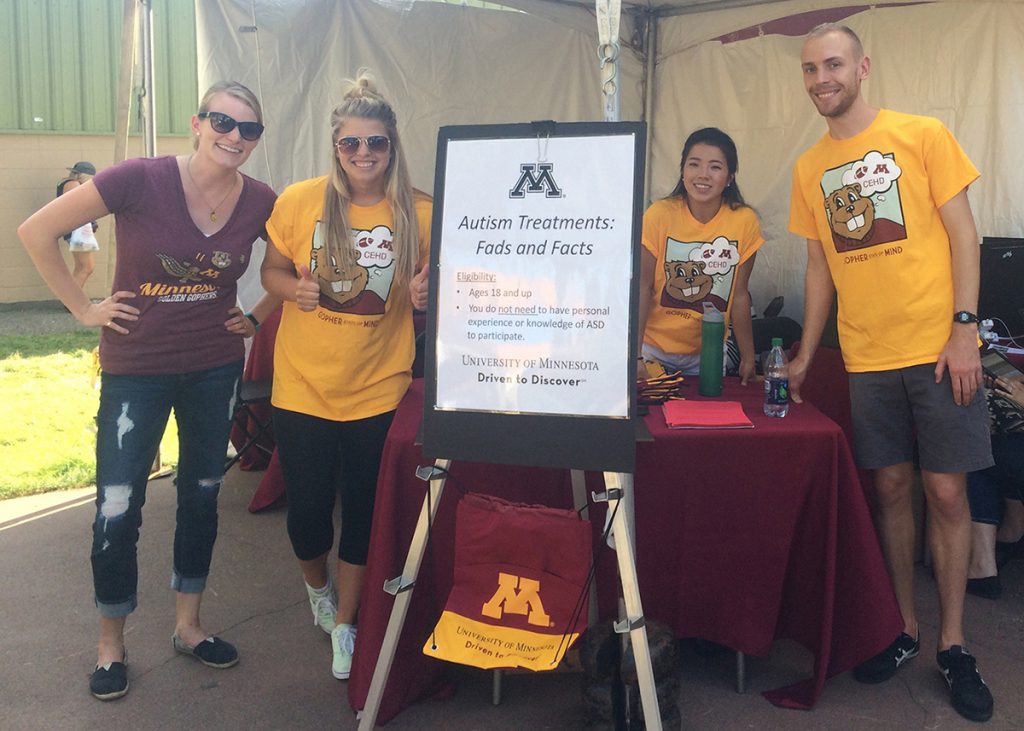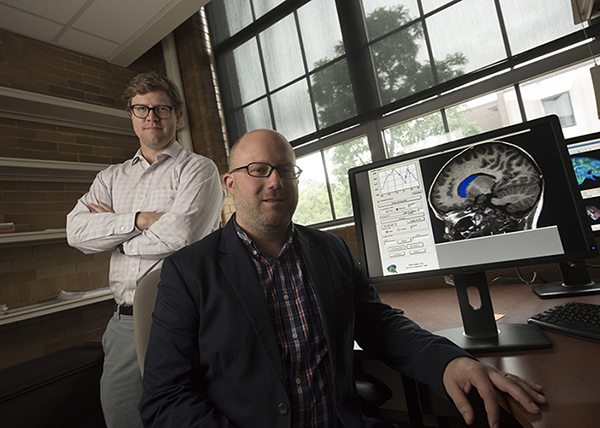When we acquire misinformation, it’s extremely difficult to persuade us to let go of those distortions, even when presented with the truth. And when we hold misconceptions about a serious condition like autism, it can have all manner of consequences for children’s health, education, and development.
Just as some teachers continue using disproven methods for correcting behaviors instead of opting for evidence-based interventions, leading to poor results, parents might opt for not vaccinating their children because they continue to believe misinformation that vaccines cause autism spectrum disorder (ASD).
Last year, educational psychology faculty members Panayiota “Pani” Kendeou and Veronica Fleury and postdoctoral fellow Gregory Trevors secured a Global Signature grant from the college’s Office of International Initiatives and Relations. It funded their research on understanding and reducing the impact of misinformation about ASD, which affects an estimated 1 in 68 children in the United States, according to the Centers for Disease Control.
Autism was a prime topic to research, Fleury says, because there is so much misinformation about what causes it and about the best treatments for families, schools, and communities.
“Autism tends to be a fad magnet. People use a variety of strategies that don’t have a strong research base—in fact, we have research to refute their effectiveness—yet they still have a strong hold,” says Fleury, an assistant professor of special education who specializes in educational interventions for those with ASD.
“We want to promote evidence-based practices instead that are most likely to be effective.”
The team aimed to assess the depth of misconceptions about ASD and develop strategies for helping people revise faulty beliefs. To get started, they set up shop at the Minnesota State Fair and connected with a random sample of fair-goers, receiving 379 completed surveys. Research partners in Canada, Spain, and the Netherlands are conducting the same survey to produce comparable data.

The Minnesota respondents were ages 18 to 81. Sixty percent had a bachelor’s degree or more. Kendeou was interested to find that, even in an educated group, about 20 percent believe that vaccines can cause ASD though scientists have insistently debunked the study making that claim. About 82 percent of respondents thought that nutritional deficiencies cause ASD, while 33 percent said it was a mental illness—also incorrect.
Kendeou, an associate professor who specializes in learning and cognition, was heartened to see that a clear majority of respondents knew some of the correct origins of ASD. For example, 84 percent identified causes as genetic and 88 percent reported that it is caused by brain abnormalities.
Such results raise intriguing notions about how people hold on to both misinformation and truth, Kendeou says.
“That’s the million-dollar question: how can you be both right and wrong at the same time?” she says. “A lot of us compartmentalize—we hold conflicting information that competes for activation, and it is purely probabilistic which will win over in each retrieval instance.”
Reducing negative impacts
These findings are reflected daily in real time. Even with evidence-based knowledge in hand, people often hold tight to their misperceptions.
“That’s where this project comes in,” Fleury says. “If the evidence-based research isn’t enough, we need to understand and address the misconceptions. We want to know what’s effective for individuals and what we can do about it.”
For example, sensory integration therapy and special diets are popular treatments for ASD, though stacks of evidence disprove them. Teachers and caregivers instead can look to the work of national centers such as the National Professional Development Center on Autism Spectrum Disorder, Fleury says, which has identified 27 proven strategies backed by solid research. They include many based on principles of applied behavior analysis, such as arranging the environment, setting clear expectations and consequences for people with ASD, and making instructional decisions based on a student’s performance.
“The idea is to help sort out information for our practitioners and parents,” Fleury adds. “Not all research is good research.”
While this project focuses on ASD, its findings apply to mitigating the influence of any misinformation, says Kendeou.
“You cannot really erase and replace misconceptions that people have acquired. That’s the sad story about misinformation,” she says. “We want to reduce its impact, not change people’s beliefs.”
In an age of misinformation and fake news, Fleury, Kendeou, and Trevors’ work has gained urgency. Ultimately, the team wants their findings to shape training for future teachers, special educators, and parents in order to raise awareness about misconceptions and identify the best ways to refute and explain them.
“We’re training the next generation of citizens, and some will be educators and parents. And the only way to bring about change is to target that demographic now,” says Kendeou. “We want to make sure we can incorporate knowledge into courses to reduce the impact of misinformation that is readily available and perpetuated on the Internet.”
Read more and link to video presentations in “Ed Psych researchers present on misinformation surrounding ASD.”
REFERENCE
“Integrating relational reasoning and knowledge revision during reading.” Panayiota Kendeou, Reese Butterfuss, Martin Van Boekel, and Edward J. O’Brien. In Educational Psychology Review 29 (2017), 27–39.
Learn more about the Global Signature Program and Panayiota Kendyou’s work on STEM literacy.
Story by Suzy Frisch, sidebar by Marcy Joseph | Top photos by Andrea Boh, sidebar photo by Scott Streble | Spring/Summer 2017

